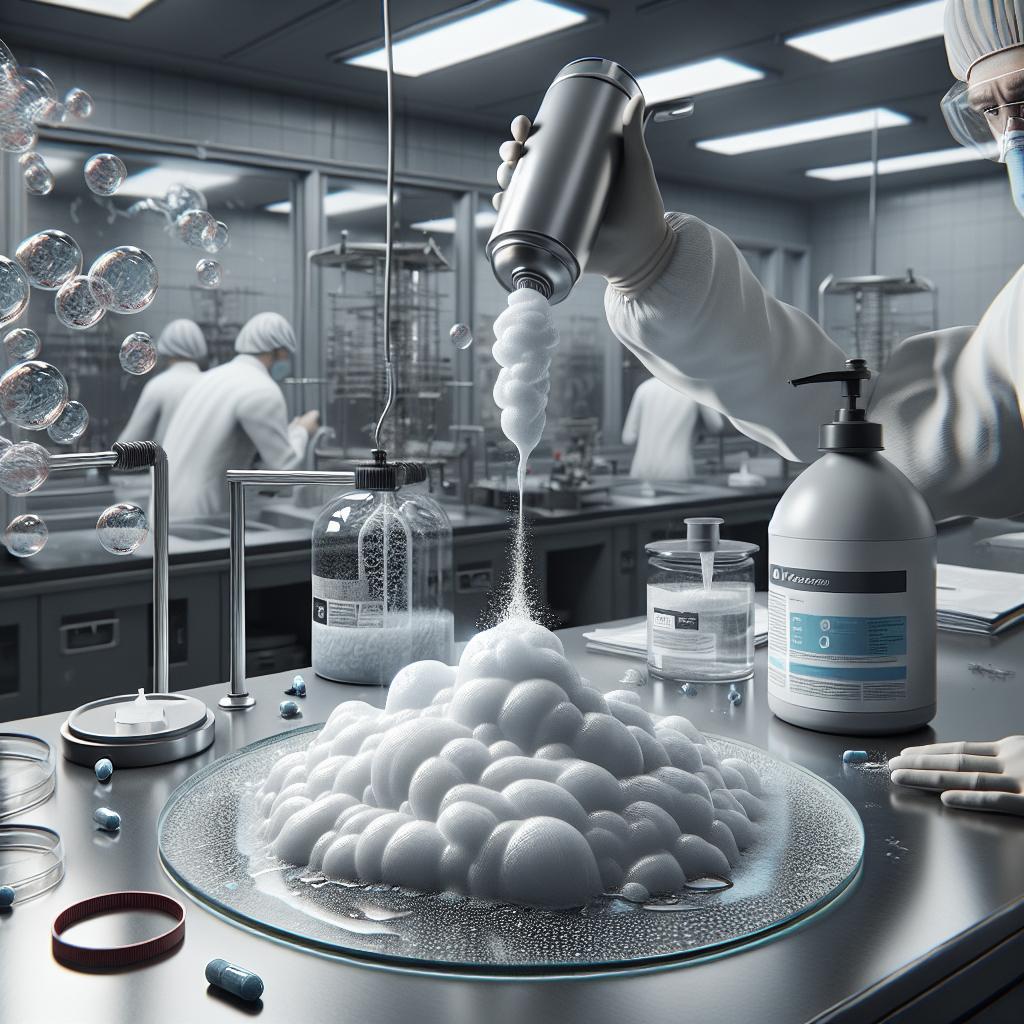Antimicrobial Foam Applications
In recent years, antimicrobial foam has gained significant attention due to its versatile applications and effectiveness in preventing the spread of harmful microbes. This blog post delves into the intriguing world of antimicrobial foam, exploring its definition, mechanism of action, and diverse applications across different industries. We will discuss how this innovative material is shaping the future in healthcare, food processing, and consumer products. Additionally, we will look at the challenges faced by the industry and future prospects for antimicrobial foam technologies. Whether you’re a professional in a related field or simply curious, this post aims to provide you with comprehensive insights into the burgeoning antimicrobial foam market.
What is Antimicrobial Foam?
Antimicrobial foam is a specially designed material infused with antimicrobial agents to combat a wide array of microorganisms, including bacteria, fungi, and viruses. The foam acts as a barrier, inhibiting the growth and proliferation of these microbes on its surface. With a porous structure, antimicrobial foam can deliver active agents effectively, making it a desirable material for multiple applications. Typically used in environments where cleanliness and sterility are key, the foam ensures the reduction of infection risks.
The composition of antimicrobial foam often involves intrinsic agents such as silver ions or triclosan, which provide long-term protection. The technology is often adapted to fit the specific needs of varying industries, ranging from dense foams used in bedding and healthcare settings to softer, open-cell foams used in appliances and packaging. Advances in material science continue to enhance the efficiency of antimicrobial foams, promising improved effectiveness and broader applications.
Mechanism of Action
The mechanism by which antimicrobial foam operates involves the interaction of its surface with microbial cell walls. The antimicrobial agents embedded within the foam disrupt the cell walls of microorganisms, resulting in their destruction. Agents such as silver ions not only impede DNA replication but also interfere with essential enzyme functions within microbial cells, ultimately leading to their degradation.
Innovations in nanotechnology have further bolstered the effectiveness of antimicrobial foam. For example, nanoparticles can increase the surface area available for antimicrobial interaction, ensuring that even the most resilient microbes are effectively managed. The result is a multi-action mechanism that makes antimicrobial foams highly effective in maintaining hygienic environments.
Applications in Healthcare
The healthcare sector is one of the largest beneficiaries of antimicrobial foam technology. In hospitals, where the risk of hospital-acquired infections (HAIs) is ever-present, antimicrobial foam is used in mattresses, cushions, and wound care products. These materials ensure that patient contact surfaces remain as sterile as possible, thus reducing the infection rates.
Antimicrobial foam is also pivotal in surgical settings, where sterile environments are crucial. The foam’s usage extends to medical packaging, operating room pads, and personal protective equipment, ensuring that healthcare professionals have a reliable line of defense against potential contaminants. Its versatility and safety make it an indispensable material in modern healthcare.
Applications in Food Processing
In the food processing industry, maintaining hygiene and preventing contamination is crucial. Antimicrobial foams are used in food processing plants to enhance sanitation efforts. Surfaces coated with antimicrobial foam are less likely to harbor bacteria, thereby reducing food spoilage and the risk of foodborne illnesses. This helps in ensuring strict compliance with food safety standards and extending the shelf life of products.
Moreover, antimicrobial foams serve an essential role in packaging. They are integrated into food containers and wraps to inhibit microbial growth, allowing for safer transportation and storage of perishables. The foam’s ability to provide consistent antimicrobial protection is particularly valuable for cold chain logistics, where temperature fluctuations can prompt microbial growth.
Consumer Products and Everyday Use
Beyond industrial applications, antimicrobial foams have found a place in everyday consumer products. They are common in items such as sports gear, household items, and personal products where they help maintain hygiene by reducing odor and bacterial growth. This is particularly beneficial in high-moisture environments, where bacteria thrive.
Products like antimicrobial sponges and cleaning wipes benefit from the foam’s structure, which maximizes the surface’s contact with cleaning agents, thereby enhancing their effectiveness. Given the growing consumer focus on health and hygiene, the incorporation of antimicrobial foams into consumer goods is expected to increase.
Challenges and Industry Outlook
While antimicrobial foams offer promising applications, the industry also faces challenges that need addressing. The potential development of antimicrobial resistance is a significant concern; overuse of such products might prompt microorganisms to develop defense mechanisms, rendering them less effective over time. Regulatory challenges also persist, as materials must meet stringent safety standards to ensure their use does not pose any health risks.
Despite these challenges, the market for antimicrobial foams is set to expand, driven by ongoing research and advancements in material science. Companies are working to develop new formulations that provide robust antimicrobial properties without compromising safety or causing resistance. The focus on sustainable and eco-friendly antimicrobial solutions is gaining traction, aiming to balance efficacy with environmental responsibility.
Future Prospects
| Sector | Applications | Benefits |
|---|---|---|
| Healthcare | Mattresses, cushions, wound care, medical packaging | Reduces infection risks, enhances sterility |
| Food Processing | Plant surfaces, food packaging | Ensures hygiene, prevents spoilage |
| Consumer Products | Sports gear, sponges, cleaning wipes | Maintains hygiene, reduces odor |
| Challenges | Antimicrobial resistance, regulatory standards | Develop new formulations, promote sustainability |


